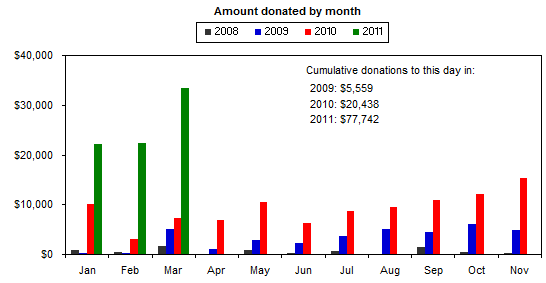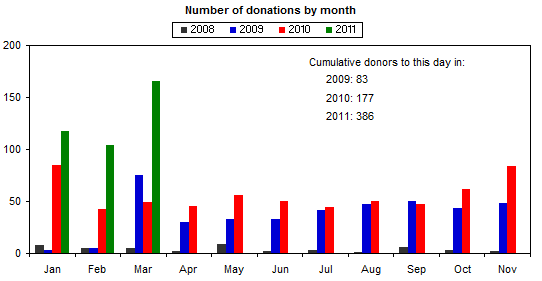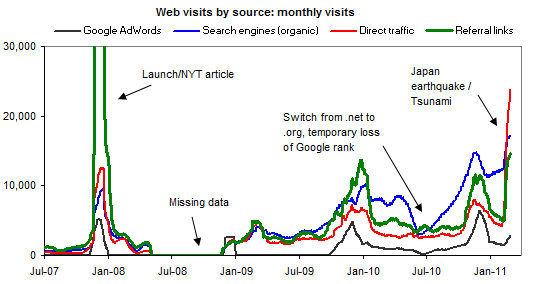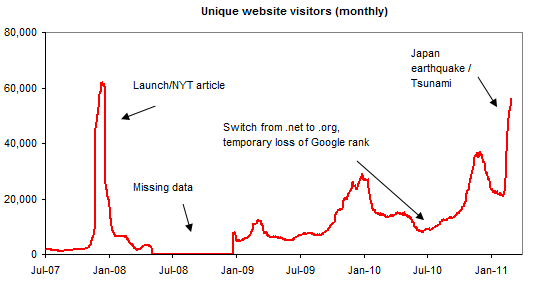A few links from the past month that we aren’t doing full posts on, but might be of interest for people interested in effective giving:
- Via Chris Blattman, a randomized controlled trial “find[s] no evidence that teacher incentives increase student performance, attendance, or graduation, nor … any evidence that the incentives change student or teacher behavior” (note this study took place in the U.S.) This can be added to a long list of high-quality studies with disappointing outcomes in the area of improving education in the U.S. (For a relatively recent review of these studies, see page 2 of a book chapter linked from the same post.) We think it’s important to look for rigorous evidence of effectiveness when giving to improve education, rather than assuming that logical-seeming programs will be effective.
- A recent study (PDF) argues that KIPP, one of our top U.S. charities, relies on high attrition (i.e., many of its students leave over time) and high funding to achieve its results. KIPP responds with objections to the study’s methodology. I haven’t thoroughly reviewed the study or the response.
My first impression is that the study is indeed seriously flawed, as KIPP suggests, but it’s also important to note that our endorsement of KIPP does not depend on the idea that it can serve all students or can operate on the same terms as public schools. For us, it’s rare enough – and valuable enough – to find a charity that can reliably improve education outcomes and narrow the achievement gap.
- Felix Salmon refers to Michael Bloomberg’s promotion of giving to Japan as “philanthropy theater”: “The point is really to be seen to be doing good, to feel as though you’re making a difference.” I agree with this characterization of such giving, and I think it’s a good example of giving that’s all about the giver, not the recipient.
- Sean Stannard-Stockton discusses his “four approaches to philanthropy” and makes a point that I think is important: “effective giving” is often conflated with what he calls “Strategic Philanthropy,” in which the funder diagnoses social problems and designs solutions themselves, seeing nonprofits as mere contractors. We find this a particularly challenging and un-promising form of giving, and we prefer what Sean calls “charitable giving”: giving to nonprofits that have found their own solutions, already know what works, and are able to help more people with more dollars.
- Aid Watch publishes unsatisfying responses from World Vision to its questions about giving away shirts. The exchange is reminiscent of many of our past exchanges with charities.




